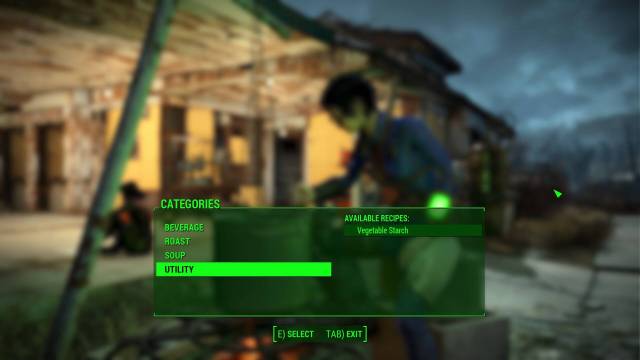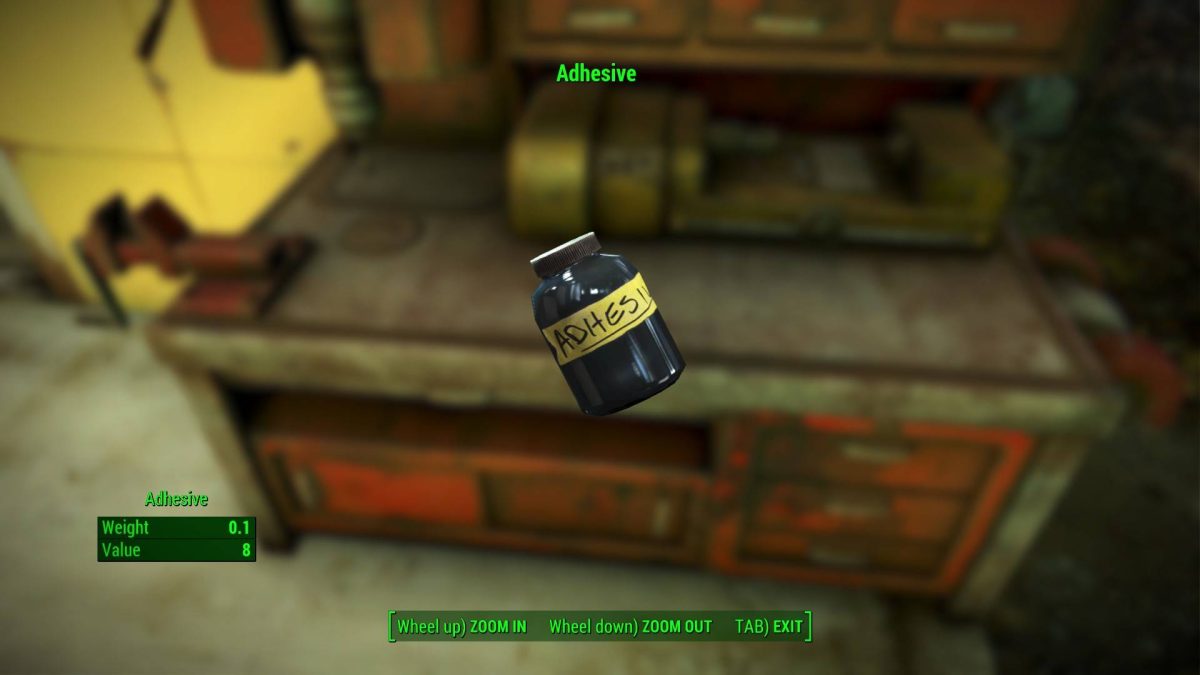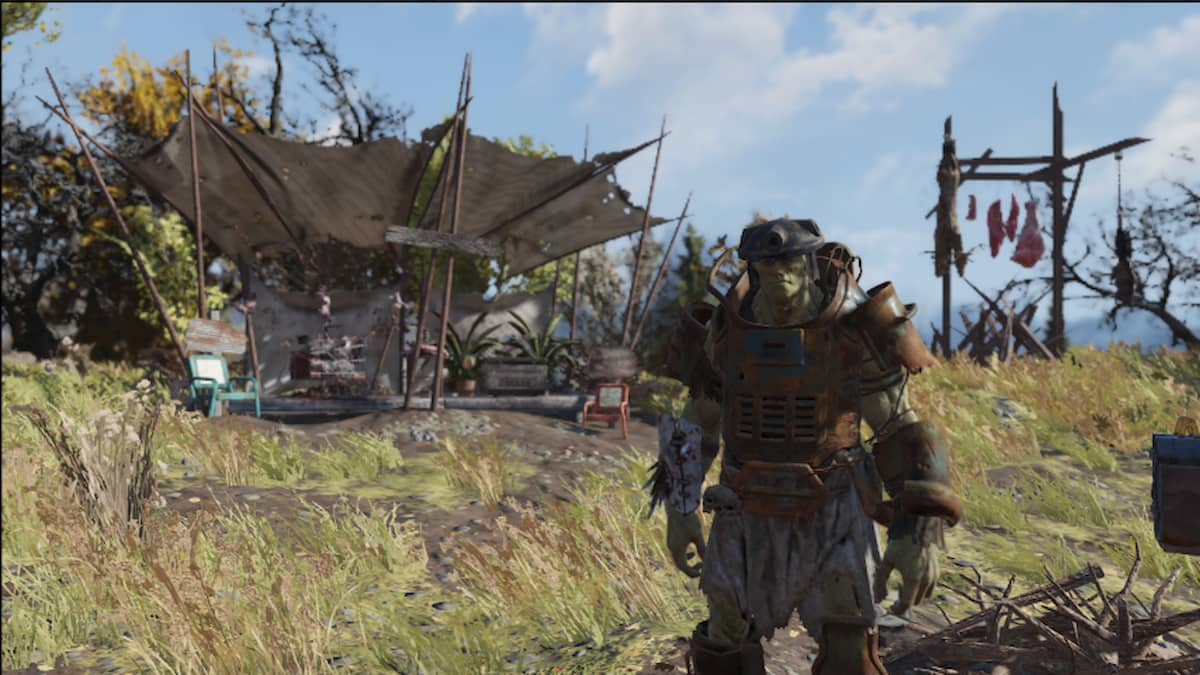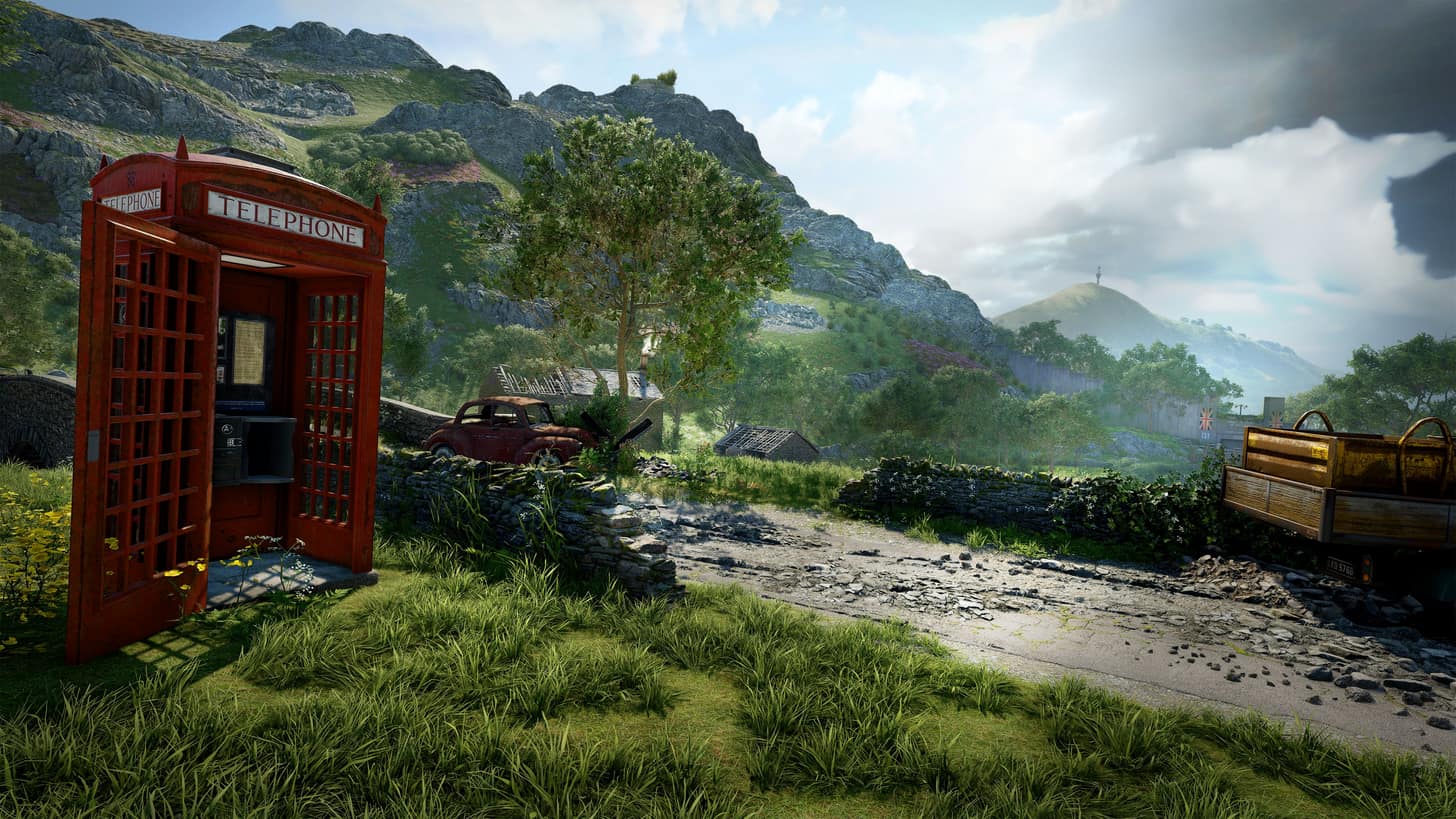As a required component in nearly every kind of weapon and armor mod, Adhesive is an essential resource in Fallout 4 you’re probably always running out of. Thankfully, it’s not hard to get an unlimited supply of Adhesive by quite literally farming it at your settlements.
Made from auto-replenishing settlement products, Vegetable Starch is the best source of Adhesive in Fallout 4 that far outstrips scrapped junk like duct tape and wonderglue in output. While it can be a little slow to set up, farming Vegetable Starch is functionally free and much more reliable than hunting down Shipments of Adhesive from various merchants. You don’t even need more than one settlement or advanced workshop upgrades to get a Vegetable Starch farm started: Here’s how.
How to start the best Adhesive farm in Fallout 4

Vegetable Starch can be found under the Utility tab at the Cooking Station and requires:
- Three Corn
- Three Tato
- Three Mutfruit
- One Purified Water
All four ingredients can be set up as renewable resources in any given settlement, provided you have at least one of each food item and enough materials to craft a water source. These resources will count towards the settlers’ needs, so the key is to set up more than what is needed to create an excess supply. Whatever the settlers don’t eat will go straight to the Workshop inventory, where you can grab them for yourself.
To start, any settlement construct in the water resource tab can start producing Purified Water. Higher tiers of water purifiers are best, but setting down a row of Water Pumps will technically do the same job—just make sure you have more than your current settler count.
The three food ingredients—Corn, Tato, and Mutfruit—can be planted as crops at settlements. You only need one of each to get the supply cycle started, but putting down multiple from the start will speed up the process. While you can grab the vegetables from various settlements around the Commonwealth, the easiest method is to head straight to Graygarden and pick up all three from the planters. You can find it far south of Concord and the Drumlin Diner, but before you cross the bridge towards Beantown Brewery and Oberland Station.

Graygarden itself is one of the best places to farm Vegetable Starch, as the robotic residents don’t consume any food or water produced from the settlement while assigned to active crops. If you’re able to handle some Super Mutants and Mirelurks, it’s well worth taking on the settlement unlock quest, Troubled Waters. Even if you haven’t joined the Minutemen, you can ask Supervisor White about Graygarden’s history to get started right away.
How to make sure your Vegetable Starch farm works in Fallout 4
While this all sounds simple in concept, the game’s mechanics make the process a bit fickle. You might find yourself troubleshooting why you aren’t seeing enough Tatos or Purified Waters in the Workshop. A few things to keep in mind to keep your Vegetable Starch farm running smoothly are:
- Crops don’t produce anything unless they’re being actively tended to. Remember to assign workers to your planted vegetables.
- You will need more active Tato crops than Corn or Mutfruit. For some reason, settlers prefer Tatos and will eat them as food before touching anything else. Making sure you have more Tato crops than settlers is essential, while connecting to Tato-saturated settlements like Abernathy Farm, Tenpines Bluff, and Oberland Station via supply lines can be helpful.
- Connected settlements eat from the same shared stash. Make sure all the settlements you’ve connected are adequately fed on their own, or the under-provided settlers will eat up any surplus from other settlements.
- Settlement resources will stop producing if there is too much excess in the Workshop inventory. There is a certain threshold for surplus resources based on the amount of settlers. Unfortunately, any food and drink counts towards this threshold, even if it’s non-settlement items like Dirty Water. It’s crucial to clear out all your consumables as well as Vegetable Starch ingredients regularly to keep the supply active and get the most out of your settlements.
Actual farming mechanics aside, another big issue is that higher resource counts means higher chances of raids. If you’re farming Vegetable Starch ingredients on a bigger scale for faster Adhesive production, make sure your settlements are well-defended. Keeping in mind that one Vegetable Starch scraps into five Adhesive, try not to set up more resources than you need. Make sure to check back at your settlements regularly to clear out the Workshop and craft Vegetable Starch even when you don’t immediately need Adhesive, and you should be able to build yourself a convenient stockpile to use while modding your weapons and armor.












Published: Apr 25, 2024 04:12 pm